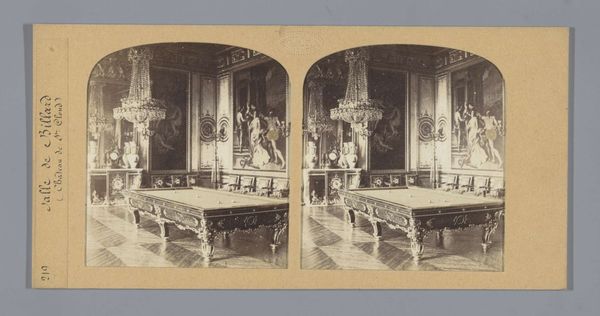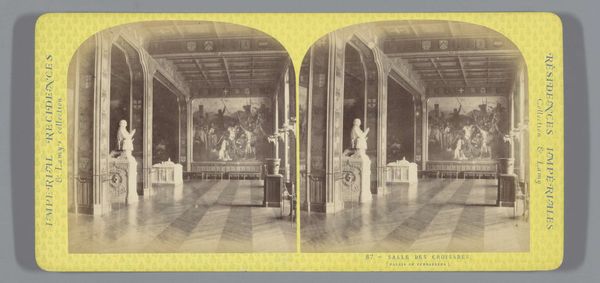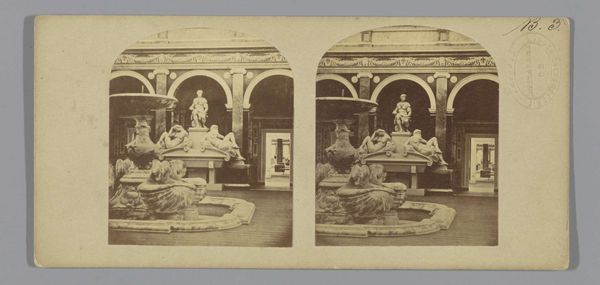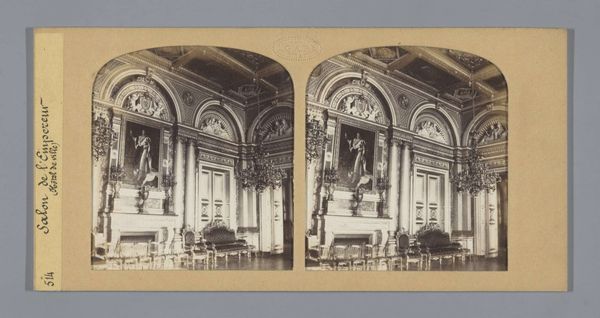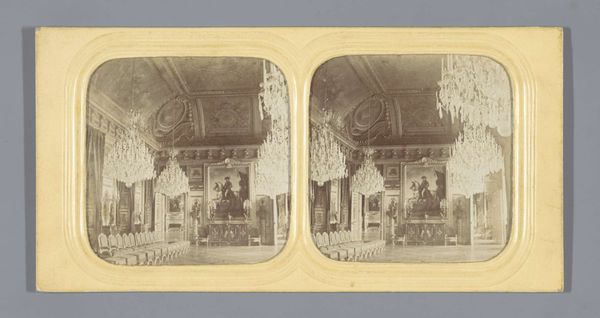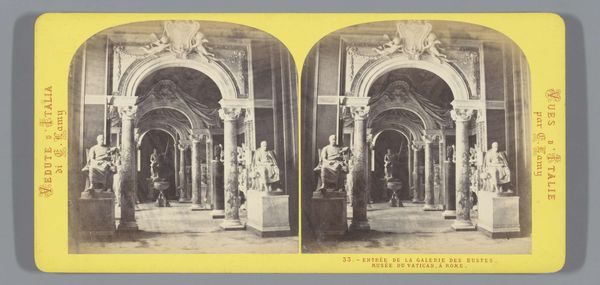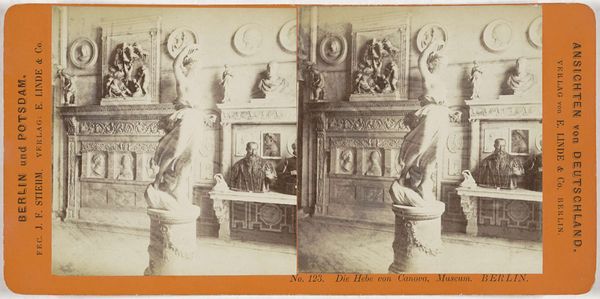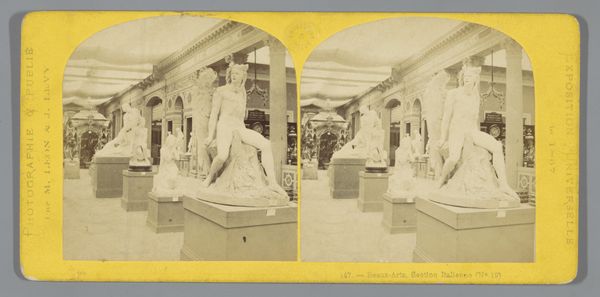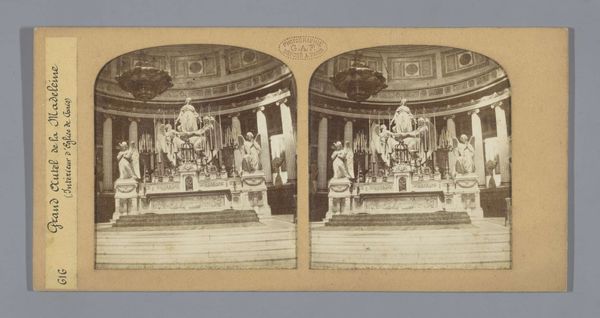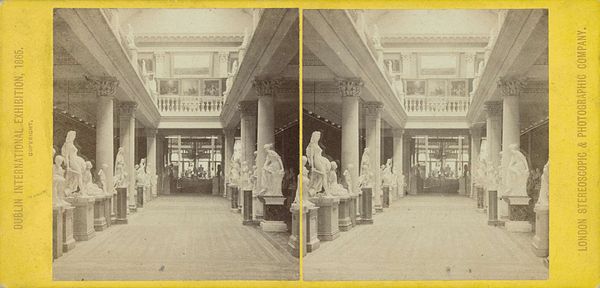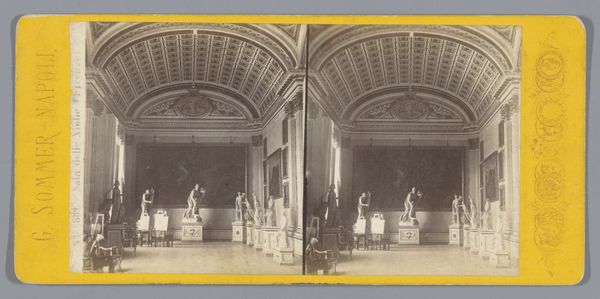
print, photography, sculpture, gelatin-silver-print
# print
#
photography
#
classicism
#
sculpture
#
gelatin-silver-print
#
academic-art
Dimensions: height 85 mm, width 170 mm
Copyright: Rijks Museum: Open Domain
Editor: This gelatin-silver print, titled "Sculpturen in de Galleria degli Uffizi te Florence," was taken by Giacomo Brogi sometime between 1860 and 1890. It's a peek into the Uffizi, filled with classical sculptures. The photograph itself has a formal, almost staged quality. What social dynamics were at play in capturing this image? Curator: Exactly. Beyond the art historical significance of documenting the Uffizi's collection, it's critical to consider this image within its socio-political moment. Photography, in the mid-19th century, served as a tool for constructing narratives of national identity and cultural power. Brogi, like many photographers of his time, captured these symbols of Western art and civilization. What’s implicit in the framing of the scene, and the decision to display these particular works of art? Editor: I hadn't thought about it like that. I guess choosing which artworks to photograph, and how to present them, reinforces specific cultural values. Does this image then play a part in the politics of display, shaping who has access to art, both literally and ideologically? Curator: Precisely! Consider who had access to these galleries in the 19th century. It certainly wasn't representative of the broader populace. Photography allowed for the dissemination of these images, but within a certain framework. Also think about what wasn’t included in the photograph. Whose stories, whose perspectives, are absent from this carefully constructed image of artistic heritage? That absence is itself a powerful statement. Editor: So, by studying photographs like these, we can actually unpack a whole historical context—not just of the artwork, but of the values it represents and reinforces. Curator: Indeed. Examining images like Brogi’s allows us to question whose gaze is privileged, whose narratives are being told, and whose are being silenced, opening up more inclusive dialogues around art history. Editor: This has made me see the photograph as more than a historical document. Thanks!
Comments
No comments
Be the first to comment and join the conversation on the ultimate creative platform.

